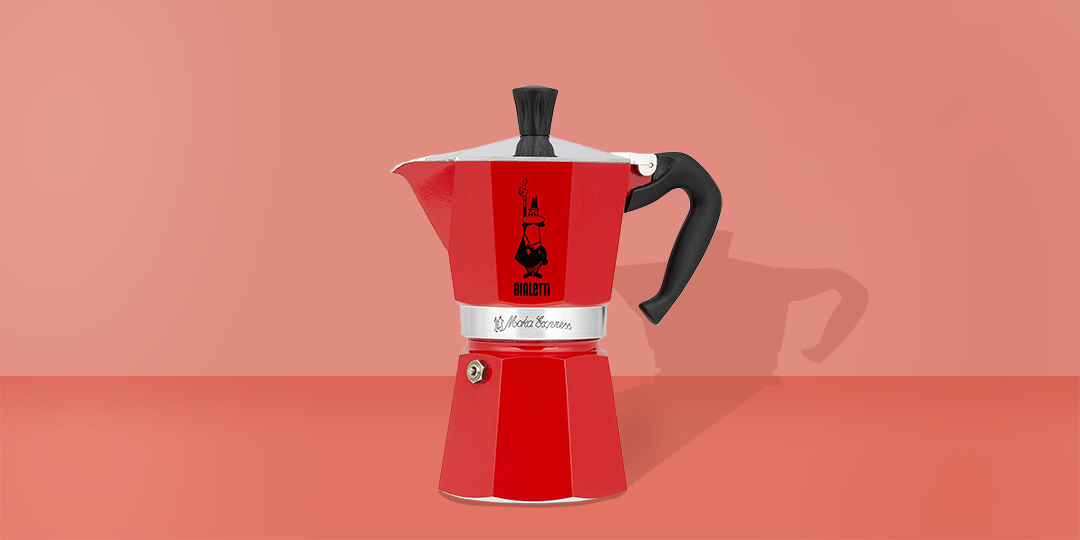This $40 Coffee Maker Has Over 5,600 Five-Star Ratings on Amazon

- Oops!Something went wrong.Please try again later.
"Hearst Magazines and Yahoo may earn commission or revenue on some items through the links below."
I’m the first one to admit that I’m… um… picky about my coffee. What bona fide coffee enthusiast isn’t? I'm also someone who likes to finish a meal with coffee, so I normally have one in the morning, one after lunch — and often one after dinner (luckily, coffee does not keep me up at night).
Thanks to this passion, I used to spend $10 to $12 nearly every day on “fancy” cappuccinos, cortados or espresso macchiatos at my favorite neighborhood coffee shops or restaurants. I did the math, and that's about $3,500 a year! Imagine what I could have done with all that cash.
But about seven years ago, when my daughter was born, it was harder to get out of the house every morning, afternoon, and (sometimes) evening to fuel up with my favorite coffee drinks — and it became exhausting to pack up the diaper bag and maneuver the baby stroller to the coffee shop.
I talked about my coffee conundrum incessantly until my husband, a professional chef, brought home a little stovetop espresso maker (a.k.a the game-changer) called the Bialetti Express Moka Pot. And after using it about 5,000 times, and trying some of the imitators, I can confirm this simple stovetop coffee maker delivers the best coffee ever. I also credit it for now saving me nearly $25,000 over these past seven years.
It doesn't have the bells and whistles that the Good Housekeeping Institute's culinary experts look for when testing the best coffee makers, single-serve coffee makers, espresso machines and latte machines — but that's part of the appeal. "The Bialetti Moka Pot is great for people who prefer a no-frills coffee maker, like their coffee strong and want quick results," says Nicole Papantoniou, director of the GH Kitchen Appliances and Innovation Lab. "I often recommend it for people who don't have a lot of extra counter space, since it's very compact and doesn't need to be plugged in." It's so small and versatile, you can even take it camping!
At first, I remember thinking, "How can basic grocery store espresso and this little Moka Pot ever compare with the dark, rich barista-perfect joe from my favorite Brooklyn coffee shop Konditori?" I was convinced there was no way this home option was going to satisfy my very specific coffee requirements: strong and smooth espresso flavor, just the right amount of steamed whole milk or half-and-half (I'm a D4 on the coffee type chart). Boy, was I wrong.
Now, thanks to my Bialetti Moka Pot, I prefer to make coffee at home. It just tastes so much better — it's ready in no time. In fact, more often than not these days, I'm disappointed by coffee shop offerings. Even if I'm heading out on a road trip, I brew my coffee before we leave and fill up my trusted reusable travel coffee mug. I also got the six-cup induction-capable version, which I use when friends or out-of-town guests visit. GH Lab tip: If guests or friends find the coffee too strong, serve up Americanos instead of espressos. It's as easy as adding a little boiling water to dilute the flavor.
In addition to making the most delicious coffee ever, I love my little Bialetti Moka Pot because it's a superb sustainable choice: There are no paper filters or plastic pods, and the grinds can be placed directly in your countertop compost at home. And sustainable living is something that matters in my household.
What is a Moka Pot?
The Bialetti Moka Express was invented in Italy almost 90 years ago by Italian engineer Alfonso Bialetti, and the coffee maker’s metallic body has barely changed since that first model. There are only three main parts: An octagonal base holds fresh water, a funnel for coffee grinds nests inside the base and an angular pitcher with a hinged lid and firm handle screws atop the base. A filter and gasket are tucked into the bottom of the pitcher to help ensure the pot doesn't leak. Bialetti's invention is so iconic that it’s part of the permanent collection at the Museum of Modern Art in New York City and the original blueprints are housed at the London Science Museum.
How to use the Bialetti Moka Express
It's so easy. Simply fill the base with water until the water comes up to the screws (which are visible inside the base). Then insert the funnel and spoon coffee grinds into it. Next, make sure the filter and gasket are tucked in the bottom of the pitcher and screw it on tightly. Place the coffeemaker on a burner, and turn it on to high heat. After a few minutes, you'll hear the sound of rising pressure as the coffee bubbles up to the top. When the sound subsides, the coffee is ready to serve.
Remember to quickly remove the pot from the heat source (otherwise your pot — and your coffee — might burn). I always use a pot holder to pour the coffee, since the handle can get hot. Another word of caution: If the handle gets too close to the heat source it can start to melt, so be mindful of that too. Any stovetop works: Bialetti Moka Pots are suitable for use on gas, electric and ceramic hobs. The stainless steel models are also compatible with induction stovetops.
For best results, I clean it with warm water (never use soap) after every use, and scrub the filter daily to keep it free from coffee buildup. And don’t forget to replace the rubber gasket about once a year!
You Might Also Like

